Podcast: Play in new window | Download
Subscribe: Apple Podcasts | Spotify | RSS
Produced by Joseph Cottrell and Ken Fuller
This week we are joined by Yes book author, Simon Barrow, to talk about the concept behind Tales From Topographic Oceans. We get into a lot of detail as you would expect and explore some pretty fascinating areas of concept music – whatever that actually is!
- What is a concept album?
- Is Tales a concept album?
- Does it even matter?
Let us know if you agree with us!
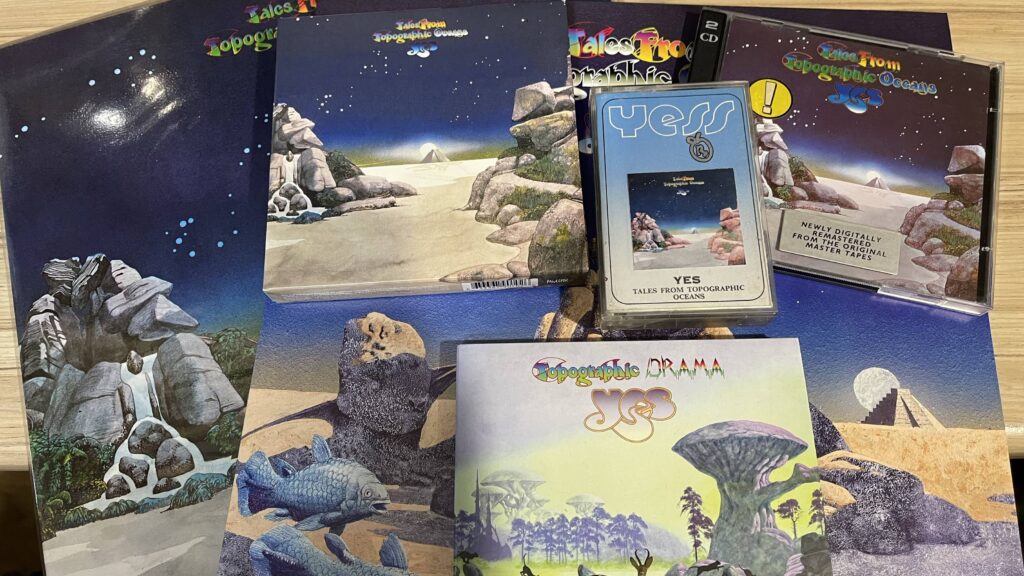
The actual footnote Jon Anderson based the concept of Tales on:
10-6: Pertaining to the shastras, literally, “sacred books,” comprising four classes of scripture: the shruti, smriti, purana, and tantra. These comprehensive treatises cover every aspect of religious and social life, and the fields of law, medicine, architecture, art, etc. The shrutis are the “directly heard” or “revealed” scriptures, the Vedas. The smritis or “remembered” lore was finally written down in a remote past as the world’s longest epic poems, the Mahabharata and the Ramayana. Puranas are literally “ancient” allegories; tantras literally mean “rites” or “rituals”; these treatises convey profound truths under a veil of detailed symbolism.
https://www.gutenberg.org/files/7452/7452-h/7452-h.htm
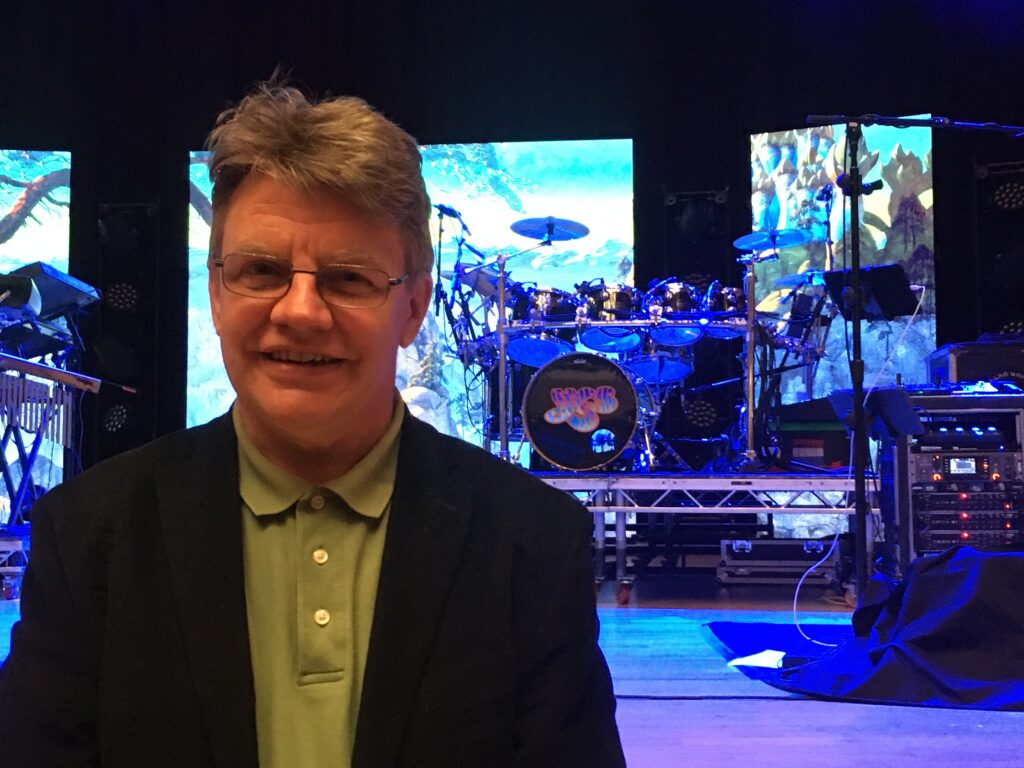
Simon Barrow at a Yes concert!
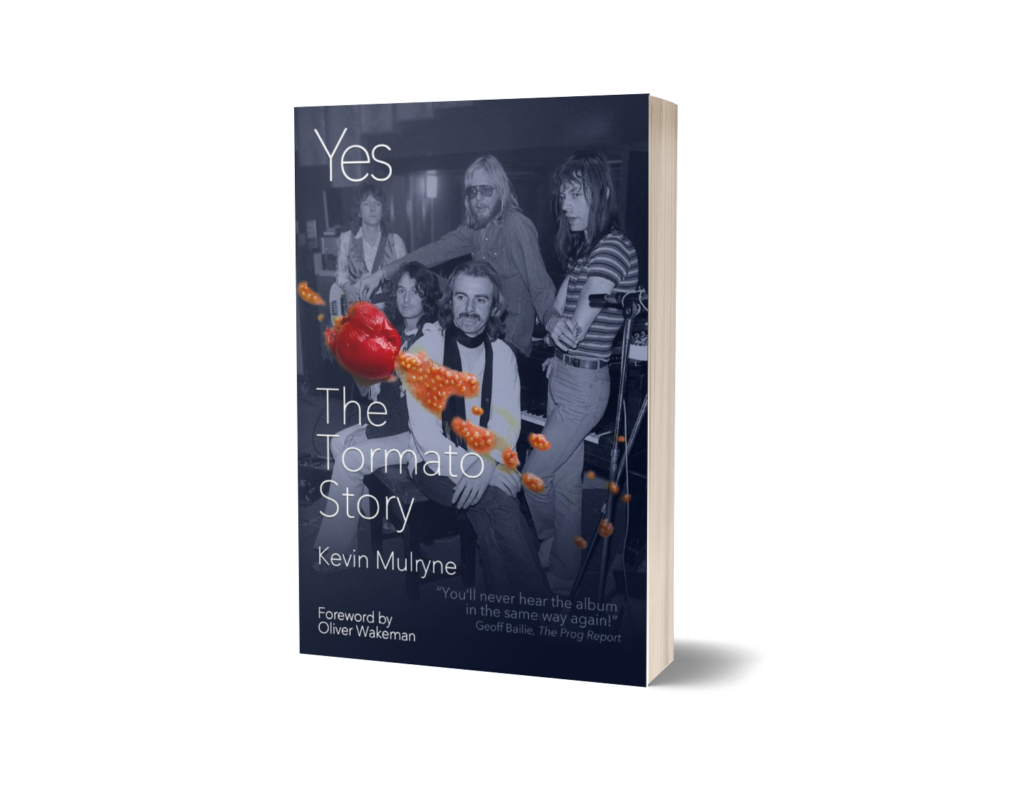
Available now!
YMP Patrons:
Producers:
- Joseph Cottrell
- Ken Fuller
Patrons:
| Jim Morrison | Jon Pickles | Declan Logue |
| Gary Betts | Alan Begg | Michael Handerhan |
| Barry Gorsky | Steve Perry | Doug Curran |
| Martin Kjellberg | Todd Dudley | Rachel Hadaway |
| Lind | Paul Hailes | Craig Estenes |
| Mark James Lang | Steve Rode | David |
| Bob Martilotta | John Holden | Stephen Lambe |
| Dem | Fred Barringer | Scott Colombo |
| Chris Bandini | David Heyden | John Thomson |
| Mark Baggs | John Cowan | John Parry |
| Dave Owen | Simon Barrow | Steve Scott |
| Terence Sadler | Steve Dill | Robert Nasir |
| Fergus Cubbage | William Hayes | Geoff Bailie |
| Steven Roehr | Lobate Scarp | Geoffrey Mason |
| David Watkinson | Tim Stannard | Robert Vandiver |
| Brian Sullivan | David Pannell | Jamie McQuinn |
| Miguel Falcão | Paul Tomei | Michael O’Connor |
Our (not really) new Facebook YMP Discussion Group is open to anyone to join but I’ll be adding rules and joining requirements when I have time (one day…). One of the advantages of the new format is that all members of the group have the same ability to post content, so it’s a bit more egalitarian, or somesuch. Please do search for the group and join in.
https://www.facebook.com/groups/3216603008606331/
Become a Patron!
Please follow/subscribe!
If you are still listening to the podcast on the website, please consider subscribing so you don’t risk missing anything:
Theme music
The music I use is the last movement of Stravinsky’s Firebird Suite. This has been used as introduction music at many Yes concerts. My theme music is not take from a live concert – I put it together from: archive.org
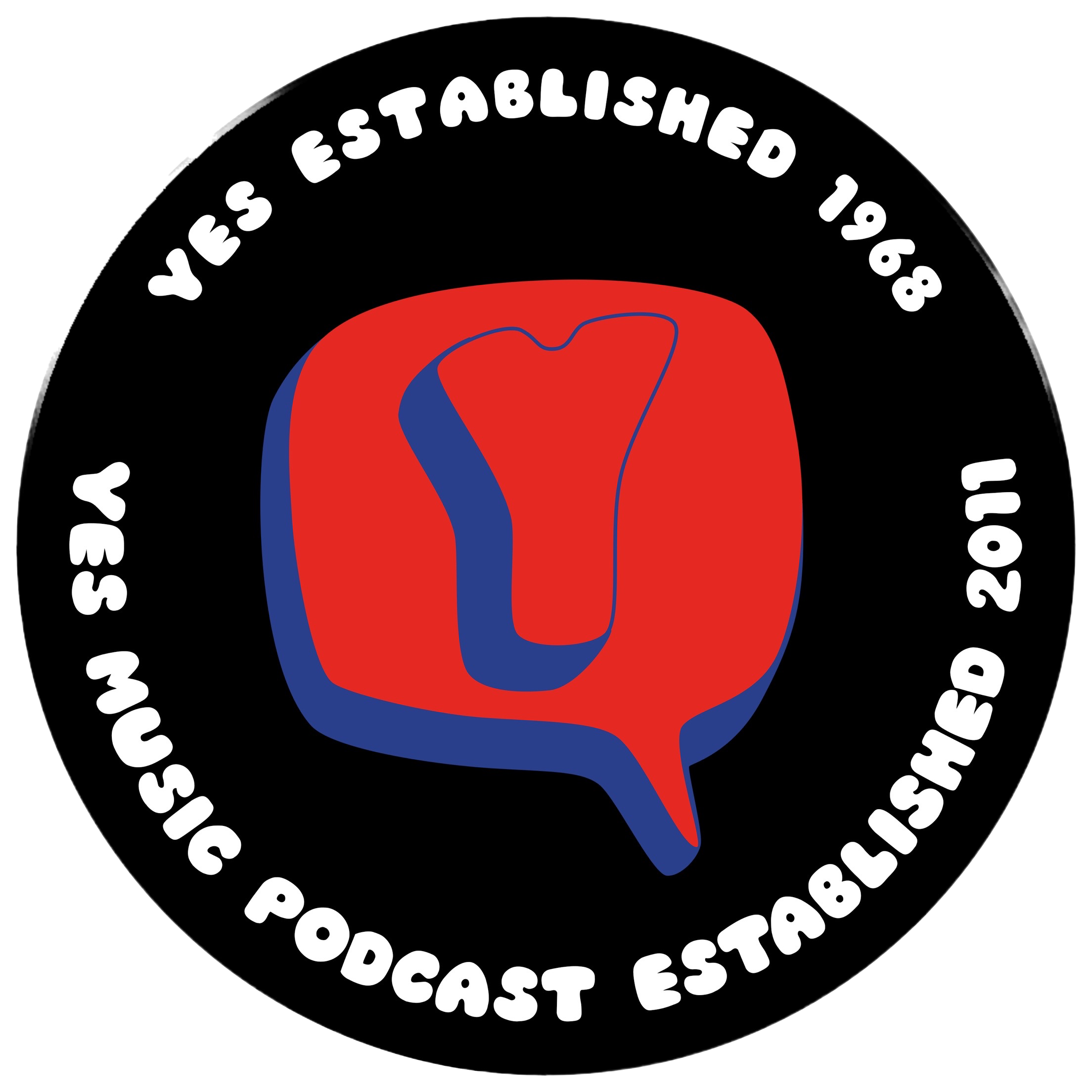

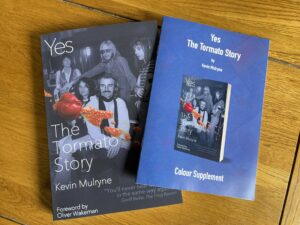




23 replies on “Yes Album Listening Guides – Tales From Topographic Oceans Part 2 – Simon Barrow helps us to conceptualise the concept – 592”
Wow what a great show outstanding to you all.
This album has stired every Yes fan I’ve ever talked to and it still to this day does the same thing.
I here what Mark says about Jon and his lyrics from everyone who is not really a yes fan. Jon is abstract first and for most always has been on every album he has been on, always have a twist on all his lyrics.
If I look at the music on Tales I agree with all of you its brillant and baffling. However I love it just as it is!
I love the conversation on it and it holds up fifty years on!
It sounds like Simon and I have a similar background of Topographic’s impact. Same age and an instant attraction to the first two sides and the artwork. Given time of course sides 3 and 4 became more embedded and more importantly understood, for me it took decades!
The issue with Topographic Oceans I think is in it’s brilliance, what I mean is that it was too advanced for it’s time. I don’t think for the story Jon and Steve wanted to tell how it could have been anything but four sides, I don’t hear padding I hear structure, arrangement, a huge amount of thought for sound and form. I hear on record utter commitment to the story being told in sounds, words, a journey which the music follows the track titles.
What Yes felt at the time was their first bad press which lead to Jon Anderson questioning his ruthless drive to tell this story, to go one better and show the world what Yes could do when challenged.
From the cover, logo, inner design work, the lyrics, sound poems, the typeface and the record centres, it is a musical masterpiece.
My first piece of Yes music, now just look what it did to me, it literally changed my life. Is there a better opening to a Yes song than side ones chants and beautiful words? Now that’s a whole new discussion point, but it is right up there as spectacular.
It probably is the album that would keep us chatting all night so I’ll call it a day for now. I chose it for the Perpetual Change book cover too as it’s such a stunning cover, but also it was the start of Yes for me.
Greetings Kevin & Mark & podcast audience –
I was one of the eager listeners to the new Tales from Topographic Oceans album when it was released in the U.S. I remember well that first listen on vinyl.
After many years of listening, about 20 years ago now, I wrote the following comments about the album’s reception for an online discussion of some sort, and I kept the text:
“There are several factors that may be cited as contributing to the mixed reviews of the Tales album. Several of these can be thought of as departures from signature aspects of the Yes sound. First, this was the first studio recording with Alan White on drums. In addition to the difference in drumming styles noted by the band members, White’s drums were recorded differently from Bruford’s, with considerably less contrast between the sound of the snare versus the toms and with a less distinct focus on the drums in the mix. Second, Jon Anderson’s voice sounded a bit tired on this album, especially in certain spots, as compared to his vocals on previous albums (and subsequent albums as well). Third, Chris Squire introduced a mild distortion effect on the bass in much of the album, yielding a sound that no longer had the distinctive Rickenbacker quality that had been his trademark since the first Yes album. Finally, the absence of the sound of the Hammond organ from almost the entire album (with a nice exception toward the end of the first track) was yet another departure from the signature sounds associated with the band at their peak.
Compositionally, the album had many strengths, including remarkably complex thematic development and interdependency among the different movements. But it also featured extended under-developed passages that tended to be repetitive (material that was “being bled to death,” as Wakeman described it); at the same time, it included experimental passages that truly pushed the envelope of what was possible in rock music – these tended to be dissonant and chaotic, and were loved by some fans and hated by others. Finally, the overall execution of the album, both in playing and in production, was a bit weaker than that of the previous two studio Yes albums. In this season of the band’s career, they had just taken the world by storm, but they were now rather worn out from endless touring. Jon Anderson later called it a period of ‘high ideals but low energy.’
Opinions are divided on the overall quality and significance of the album, but it remains a landmark work of the progressive rock era. Though a number of shorter works from other bands may have exceeded Yes in qualities such as technical prowess or melodic and rhythmic complexity (e.g., Emerson, Lake, & Palmer; Gentle Giant), Topographic Oceans’ combination of epic scale, compositional sophistication and integration, and original rock material remains unmatched by the efforts of other bands of the time.”
I find myself leaning firmly in Mark’s direction on this record and his comparison with Waters / Floyd is astute. Arguably Rog has spent the last 50 years plus releasing nothing but concept albums. Focus, clarity, a matching musical purpose are his hallmarks. Love him or hate him, Waters knows all about delivering a concept in the context of rock music. He understands its strengths and is more than familiar with the pitfalls having tried to marry rock to high culture as far back as ’72.
TFTO’s greatest weakness is perhaps its insistence on being conceptual in the first place. If it was simply four sides of Yes being Yes then I suspect it would be seen as an interesting but deeply flawed experimental detour between their two three-song masterpieces. An interesting detour that is undermined by the creative hubris that comes with great fame and the promise of great fortune. One also suspects that Yes didn’t hear “no” very often in the years between 72 and 79 and this was the result.
Rick is the interesting element here as I think Rick has an in-built resistance to allowing himself to take rock music too seriously. He is here for the melody and the conveyance of emotion and for grand designs that actually serve the music but he knows that if you step too far towards the world of high culture your music is going to be stood next to Brahms 4 and Bruckner 9 and Tristan & Isolde and will inevitably be found wanting. Especially if your music contains significant nods towards the structures, textures and harmonic tropes of the classical canon.
He also knows that one of the great things about rock is that can be both serious and silly, often at the same time. Bowie in particular understood that if it loses its roots with adolescent naivety and wonder it is robbed of its power and its buoyancy. Taken too seriously robbed of all its fun and saddled with intellectual grandiosity it can sink like a stone. Sgt Pepper works partly because it is full of fun.
So I totally understand why Rick would find TFTO anathema as it lacks compositional discipline, contains reams of terrible poetry that has pretentions to meaning rather than just being an enjoyably evocative word salad, contains even at double the length fewer memorable melodies than any of the previous three records and emotionally is quite recessed a lot of the time. There are very few moments that provide the melodic glories and tension / release of And You & I. There are very few sections as brilliantly constructed and arranged as Siberian Khatru or Starship Trooper. By those measures it is not a success. That doesn’t mean that it doesn’t contain some good rock music but they made it very hard to get to and the fact that the whole thing is shrouded in this rather flimsy concept does not help one bit.
My brain tends to cue into the instrumentation rather than lyrics on almost everything I listen to (initially, anyway), but it seems to me that if there’s any part of Tales that Steve contributed lyrics to, it’s the “Leaves of Green” section of “The Ancient.” It’s much more just straightforward poetry in plain English than the random word association Jon employed so heavily at the time. I think it’s possible that it was a completely composed acoustic piece that Steve might have suggested fit into the larger piece.
Also, I’ve always loved the sly little call-back to Close To The Edge that he tucked into the acoustic guitar solo.
Hi Joseph – I’m puzzled by your reference to ‘the sly little call-back to Close To The Edge’ in the acoustic guitar solo of Leaves of Green. I’ve been listening to this music for almost 50 years but I’ve never noticed this which seriously worries me! The CTTE reference in Ritual is obvious but after listening to Leaves of Green yet again today I still can’t hear it. Can you give me a time reference and I’ll try again. Thanks.
On my iPhone in Music it’s at 13:23 and lasts for all of two seconds. But now I’m curious as to where in Ritual you are referring to… ?
Thanks but unfortunately I still can’t hear it – your hearing is clearly more finely tuned than mine . The reference in Ritual is the main theme of CTTE. at 4.23. Hope you find it.
The CTTE reference in The Ancient happens at 13:25. Hope this helps.
Ah – sorry – you already have this information. Maybe I should say it’s essentially the same notes as the opening lines of CTTE just after the waterfall & birds. The rhythm of the notes is slightly different in The Ancient and the classical guitar is only playing one note at a time (whereas the electric guitar at the opening of CTTE “thicker” – doubled in.a couple of different ways, I think). But otherwise it’s the same completely unique Steve Howe guitar figure.
Got it! Thank for highlighting this – I’m so happy that after 50 years there’s still something newts find in this music. Thanks also to Greg for the help in locating the CTTE guitar figure.
…aaand, of course, I eventually remembered the rather obvious one in Ritual. Sometimes it sucks, being the same age as ‘old people.’
This is such a fantastic discussion. I’m really enjoying listening to (and reading people’s) thoughts. I have nothing insightful to add, but I would say I totally “get” Mark’s dislike of non-literal lyrics.
I have the same thing with non-literal poetry. My brain just switches off – almost as if it’s deliberately putting up a block to prevent me even trying to understand. I become unreasonably angry (I’m not sure whether this is with myself for not understanding it or the poet for not saying what they mean).
However, I have a totally different reaction to non-literal lyrics. It’s almost as if the music acts as a catalyst in enabling me to get the general drift of the meaning and appreciate the beauty of the words.
I love the lyrics to TfTO. However, I’m pretty certain if they had been presented to me as a written text, instead of aurally, I’d have reacted like Mark.
Loved both the Tales podcasts so far – thanks to all!
A few observations.
Like Joseph, I suspect I focus instinctively more on the music than the lyrics.
The discussion regarding how much Jon knew about the detail of the footnote, or the whole book, is interesting in a way but it misses the key point for me. Why would we find it necessary or desirable that he did? Artists can surely be motivated or inspired by all manner of stimuli. It might be a detailed study of a book, but it might be a poem, a word, a sound – anything which resonates with them. If the footnote inspired Jon to go off on a tangent of his own to some degree on Tales, that’s fine with me!
And regarding The Remembering. I appreciate Mark finds it unmemorable, but isn’t the closing section, from “ Ours entranced we surely carry on”, one of the most sublime, rousing and magnificent examples of Yes music in their entire canon? I say yes!
I’ve really enjoyed this latest pair of episodes. While I mostly disagree with most of what Mark says about TFTTO I enjoy his rants. I agree totally about his opinion on Steve’s guitar playing on The Ancient. For me The Remembering is totally sublime and memorable. Simon’s description of the symphonic textures of Rick’s playing is spot on.
Rick’s comments on this album are consistent with his grumpy old man persona, especially as he left the band after it. If he felt so strongly against them why did he rejoin again and again? He’s capricious that’s why.
Jon’s lyrics have always been somewhat abstract but impressionistic. I struggle to understand why Mark has a problem with that as he’s gone from being a some time listener to co-host. If strong lyrics are what he wants he should listen to Sting or Cole Porter. Jon’s words are about texture and mood.
I love TFTTO as a piece I don’t care about the concept or how it relates to the music. Over the 50 years I probably read the lyrics maybe once or twice. I tend towards Simon’s way of listening to it completely rather than just one or two of the songs. I’d love to hear The Ancient without the guitar as it’s rhythmically brilliant with great interaction between Chris Alan and Rick. I think Mark would like that too. I know I could get him to love The Remembering as the gentle second movement.
Well, how this album continues to divide opinions, even after all this time. I bought this album as a 16-year-old when it was first released in 1973. Like CTTE it has been the soundtrack to my life since it was released. I doubt a month has passed in the last 50 years, when I have not listened to both albums and agree with Simon that TFTTO contains some of Jons best lyrics.
I wouldn’t change a single element of this masterwork even though, after all this time, I still find the dissonance of the first five minutes of The Ancient a challenge. For me, the integration of the concept, the lyrics and musical structure is crucial to my enjoyment of the whole. For example, I remember reading an interview with Jon around the time of its release, where he talked about how the musical structure of the four movements reflected the emotional ‘feel’ of the four elements of the concept. The Revealing being primarily a group ensemble piece to introduce the album and concept. The Remembering featuring primarily keyboard to create a dreamscape with washes of sound. The Ancient featuring primarily guitar which during the first 10 minutes really does feel like it comes from a time beyond memory. And finally Ritual gloriously represented by Chris and Alan’s, bass and drums.
Whilst I could go on for hours about different aspects of this album I think it’s great that different people can enjoy it in different ways. For some it’s primarily about the music whilst for others it’s various combinations of concept, lyrics, structure and music.
As a recent inductee into YMP I have been gradually working my way through the back catalogue but the last two episodes on TFTTO have been simply excellent.
One final observation from me on Steve’s contribution to lyrics. He definitely contributed to many Yes lyrics during the Jon Anderson era. For example, some of the lyrics on CTTE saw their gestation in a song he was writing about living on the banks of the Thames River (“Down by the River“?). The “In her white lace” lyrics also came from Steve, I believe. I would be very surprised if something similar hadn’t happened with the lyrics on TFTTO. I.e. Steve producing some original ideas, later developed by Jon. The finished versions make clearly be J A “poetry“ but that doesn’t mean Steve didn’t make significant contributions.
Can’t wait for the next episode of why MP continuing the discussion.
I caught the tour at Birmingham Hippodrome (3/12/73). It was a wonderful concert enhanced by Dean’s imaginative stage set wherein the band entered through an umbilical tube. However, the memory that stands out from that night was that, during ‘The Remembering’, and with a spiritual resonance throughout the room, we had the incongruous sight of Mr Wakeman demonstrating masterful control (and disdain) by playing Mellotron with his left hand whilst using his right to launch peanuts in a ballistic trajectory, their flight terminating in his mouth – in the vernacular he certainly had ‘the chops’.
Interesting comments from Jeremy about why Rick would have rejoined the band for Going For The One. Respectfully, I think it’s a little simplistic to attribute it to his being capricious. Two very good reasons for Rick’s rejoining : 1) he saw that the band was taking a different musical direction to that which he experienced on Tales ( and probably foresaw on Relayer) and he felt comfortable with that, and 2) he probably needed the money!
I don’t necessarily actually have to understand YES lyrics or “get it” to enjoy a song or an album. It is sometimes like when I look at illustrated art, or sculpture, or poetry.
For me, I appreciate how a song or album affects me, more so than merely being able to decipher what I’m hearing. Yes, sometimes it may help to be able to decipher a creator’s meaning, but to me it is more salient to consider that the piece has moved me.
I don’t need to know what a Siberian Khatru is any more than I need to understand the question as to whether color of the sun has turned crimson white.
NICE!
You might enjoy an episode of the Big Yellow Praxis podcast that Jacob and I did a few years ago: https://www.youtube.com/watch?v=yO6KK7GoM0I
Really good to read all the comments. This has obviously stirred quite an interest, and I intend to write more about both the themes and lyrics of Tales at some point (though first I have to deliver the manuscript for ‘Yes in the 1990s’ to the wonderful SonicBond!). Inevitably, there are things I wish I’d said – or said more cogently.
It’s clear that in musical terms many find the instrumental sections of the ‘The Ancient’, pivoting around Steve Howe’s left-filed guitar, with its dissonance and echoes of less familiar Eastern harmony, the most challenging – and many dismiss it. I think it’s among his finest work, and I’m still kicking myself that I didn’t talk to him about it when I got an hour-long interview with him back in 1991 (ostensibly about ‘Turbulence’, but ranging much more widely). It’s the kind of music that requires patience, a certain re-tuning of the ear to different musical sensibilities, and a willingness to be challenged. Because of the kinds of music I more regularly listen to, it wasn’t such a huge climb for me… but it was (and is) groundbreaking. I confess that “Leaves of Green” sounds too sweet and almost twee to me, disconnected from its imbedding in the whole side (movement). But that’s only part of why the sub and flow of the entire work is indivisible for me… talking of which, I’m a bit non-plussed by criticism soo ‘The Remembering’. It has different, but entirely singable melodies, and the climax – reprising material from ‘The Revealing’, and pointing forwards to ‘Ritual’ is one of the most singularly powerful passages of Yes music in the history of the band.
As for the lyrics – yes, they are full of allusion, metonymy, surprise and sound sculpting. But that’s why I love them, and what a more poetic turn is all about. Opening up fields of meaning and possibility, rather than reducing things to the plain of the obvious and explainable. You can get the latter in any number of rock albums. Here, as in every part of it’s aesthetic, Tales pushes the boundaries.
Lastly, it’s worth mentioning that ‘Autobiography of a Yogi’ spurred artists from a whole range of quarters in the 60s and beyond. Jamie Muir is the obvious other one in the progressive rock filed. In jazz, there’s Wynton Marsalis’s father…
Lots of great comments and discussions. I agree with most of it, so I won’t repeat it.
I like the dissonances of side 3 and believe they are intentional. Here’s a thought: was side three inspired by Stravinsky’s Rite of Spring? Given the ground-breaking nature of that composition, I see the parallels.
Although I don’t think that sides 1 and 4 are in the classic symphonic sonata form, I wonder if Sibelius’ Symphony 7 (in 1 movement) was an inspiration. Jon Anderson did say that Sibelius was an inspiration, in general.